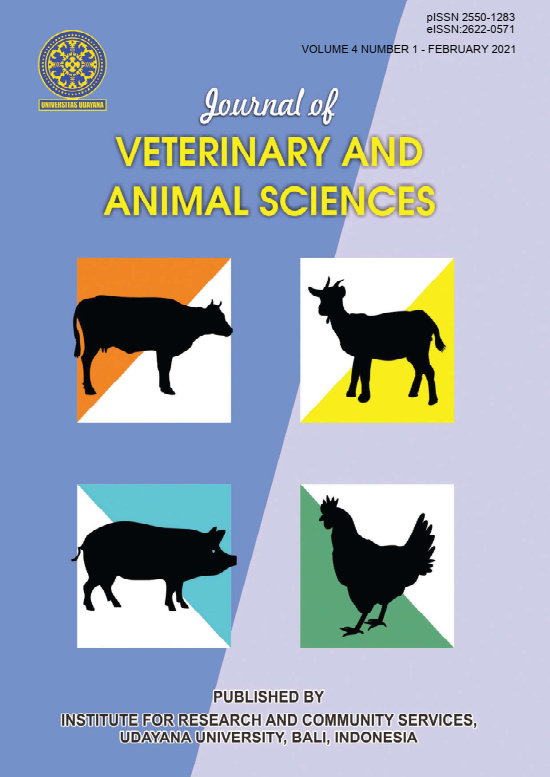The Changes of Temperature and pH of Bali and Landrace Porks After Slaughtered
Abstract
Abstract. Pigs are critical livestock in providing animal protein for some people in Indonesia and are the third contributor to animal protein sources after poultry and cattle. Pigs is one of the essential commodities in terms of nutritional, socio-cultural, and economic aspects. The acidity (pH) level dramatically affects the quality of the meat because the pH value affects the tenderness, water holding capacity, and color of the meat. In principle, low-temperature withering or high temperature affects the speed or slowness of the pH decrease rate. This study aimed to determine the temperature drop and pH rate of the meat on the quality of balinese and Landrace pigs after slaughtering. The study design was purposive sampling. The samples used were the meat of the psos major muscle of balinese and landrace pigs, with 32 samples consisting of 16 balinese pigs and 16 landrace pigs. The data from the laboratory tests were analyzed by comparison with the statistical test of variance analysis of variance (ANOVA) with SPSS. The results showed that the decrease in acidity level (pH) in balinese and landrace pigs were significantly different (P<0.05), while the decrease in temperature in balinese and landrace pigs were not significantly different (P>0.05). It can be concluded that the decrease in pH and temperature in balinese and landrace pigs can affect the quality of pigs after slaughter











